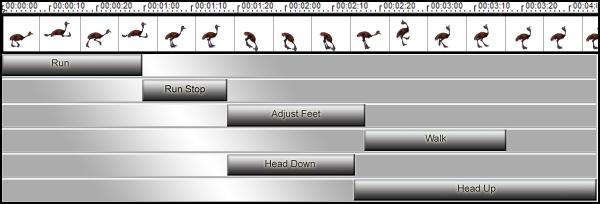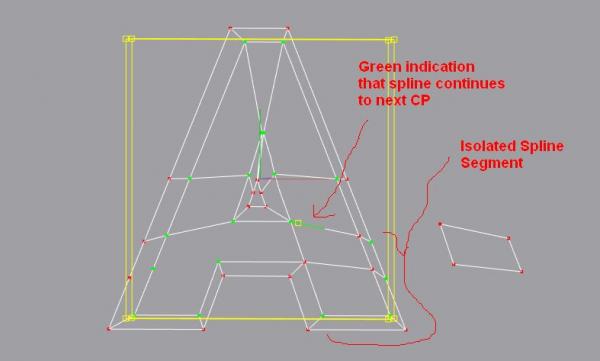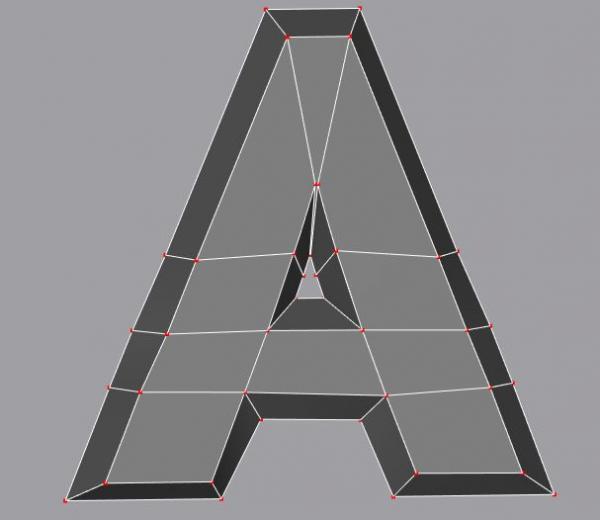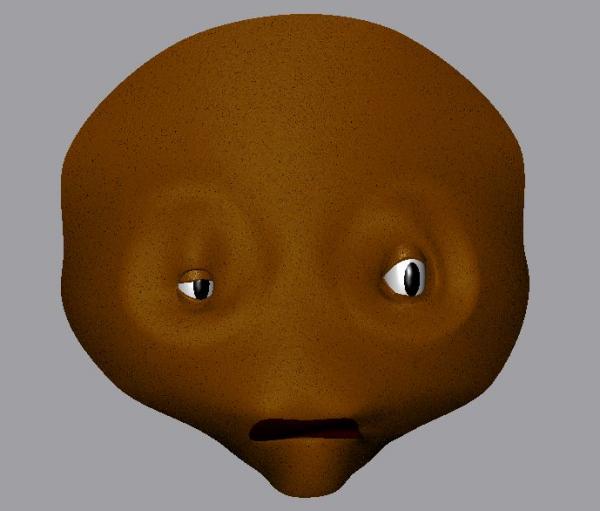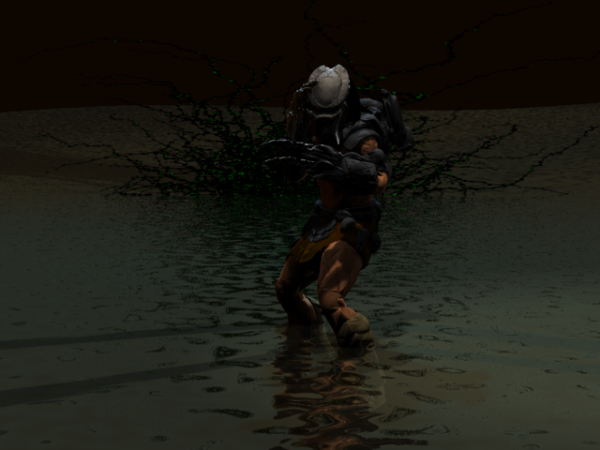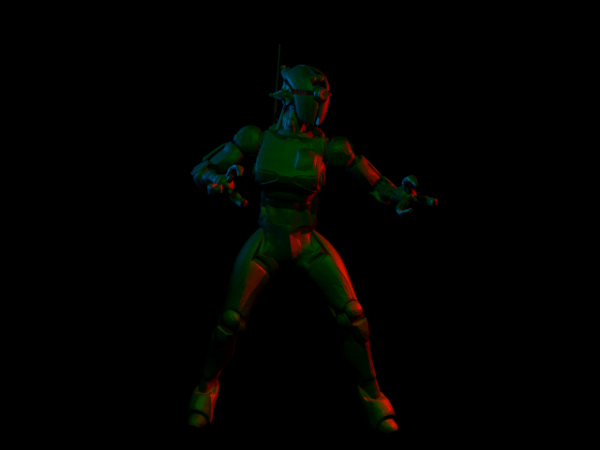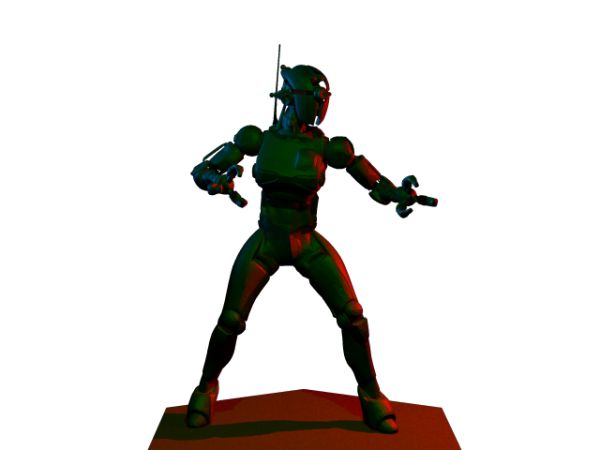-
Posts
21,630 -
Joined
-
Last visited
-
Days Won
114
Content Type
Profiles
Forums
Events
Everything posted by Rodney
-
Thanks! That's close Robert. I don't think it's a fix but certainly a work around. What we'd have to test would be saving the model out and then reopening and see if the newly assigned default is maintained in the process. Unfortunately, I don't think it addresses the main issue. The underlying need is to have any number of on/off poses set in the Model so that when they are opened/reopened in A:M the defaults appear as set and will revert to that default as necessary. This would be similar to that of setting the defaults in a percentage pose. And that presents another workaround. We can forego the standard On/Off pose entirely and set up a percentage pose that consists of boolean response; 0 and 1.... -1 and 0... whatever, as long as only two states are allowed. This would create the desired on/off pose whose default could be saved and reloaded. I briefly used that workaround once before. I'll look again at your video and double check to see if it doesn't provide a fuller solution than I see on first viewing. Easy enough to test. I'm curious if saving the Model out via the Chor saves the 'new' default in the Model or if it reverts back to original or not set.
-
We'll have to seek expert advice but as I understand it this isn't about the movie files... but about the Quicktime program itself. The program code contains the vulnerability not the files it produces. Hence the call to uninstall the program. Of course we can assume that a likely means of gaining access would be through files (movies) the programs opens but any executed code devised for that purpose would do. Perhaps it's time to get that A:M code for video editing out of mothballs. As this is likely a reference that won't resonate I'll offer this image of a feature none of us present (to my knowledge) have ever used. Disclaimer: I know that A:M can't have the code that it takes teams of programmers to maintain in video editors. I just ocassionally consider things that might have been. The timeline filmsstrip is only one of many features that had to be set aside for the greater good of all users (and greater priorities) back in the v10/v11 timeframe. Another would be the little 3D preview image that we could see and manipulate before opening a model back in that same timeframe.
-
This is something like a ten year old thing so I'm hopeful that a solution will float to the top. It can obviously take me awhile to get around to addressing issues but I eventually do. I vaguely recall using a text editor to test setting of the default but I don't remember the outcome of that. This was sometime around when percentage poses gained the abilty to go into larger ranges than 1 to 100 and allowed negative percentages.
-
That would be great *if* the Settings option was always there. Unfortunately, it doesn't always appear in all Poses (and hasn't in all cases as long as I can recall). It appears that this is primarily a difference between the On/Off pose versus the percentage pose. In the Percentage Pose the Settings option appears while in the On/Off pose it doesn't (always). This has been a long standing thing and I've never brought it up in the forum before as I've never locked down the rules of engagement (i.e. the optimum workflow). Try this and see if the Setting option shows up upon Right Click. - Create New Model (empty or otherwise) - Right Click and create a new On/Off Pose - Now Right Click and look for the Settings option to set the defaults Most of the time (although I won't swear that it's always) the Setting option isn't there to select. In a percentage pose it appears to always be there (I still need to confirm) Perhaps this is an omission that no one ever reported? I have a faint memory of the settings option appearing intially when creating a Pose but then disappearing later. I also have a dim recollection of asking Raf Anzovin why the Setup Machine didn't create rigs that were turned on by default. I never got a satisfactory reply to that query. Most folks said... just turn the thing on. I viewed it more from a newbie standpoint of deflecting questons of why the rig didn't work when what really needed to happen to activate the rig was turn on a pose. Could it be that an issue with setting the default to On was an issue even back then? Some of my thinking that the Settings option appeared/disappeared may just be the result of me going from an On/Off pose to a percentage pose and not realizing I had altered the variables. Added: As it appears to be more accurate I've edited the topic to specify setting defaults for On/Of poses.
-
I've done this before and know that there is a specific place we have to look to set this but I forget. Perhaps someone can get me back on track. I have a faint recollection that this is best set immediately upon creation of the pose slider as well. The most basic example is the On/Off pose where the pose is set to On by default (which without setting is 'Not Set' by default) In the case of a percentage pose the example might be to set the default as 0 on a scale of -100 to 100. As I have to occasionally revisit this It'd be good to get this cemented in my mind. Thanks in advance! Edit: I may have answered my question already but I'm hoping my answer is wrong. I see that we can easily set the default and other settings of a pose in an Action. I thought we could set the default in the Model itself.
-
As of February of this year Apple and Microsoft published an interesting document emphasizing the need to move forward and do so sooner rather than later. For those with an interest I've converted that document to PDF and attached it here. A few take-aways: The document describes some of the issues Apple is facing with splintered implementations to the MPEG standard From the papers introduction: This does beg a few questions. What is the current volume of data delivered over the internet and what are conservative and extreme projections of growth in the future? (easy enough to google) What is the equivalent of html for video (my term here.... hvml: hyper video markup language?). Future formats need to allow for such connectivity with images as html does with text. In short, how does the technology merge the two together to where there is no discernible difference between woids and picchas? Current realities don't appear to address this. What is the transmission capacity of the internet? (easy enough to google) How this will change in the future remains to be seen but (presumably) must be engineered. It might be time to dust off Martin's old notes on distribution of content on the internet. The document proposes some likely formats/standards: and proposes some constraints: All this quickly gets a bit too technical for the majority of us that just want to render and share our movies. Added: Some of the proposed formats/codecs such as AV1 designed to resolve issues of interest are projected to -begin- to come online in the 2017 timeframe. Apples move with Quicktime may be a strategic part of their effort to have the mass move more fully toward support of that timeline (and beyond). From streamingmedia.com: So, they believe that codec-wise VP9/10 and AV1 (or is it AV2 by then?) are on the rise. VP9/VP10 is a video coding format developed by Google that is open and royalty free. The AV1 codec is a product of the Alliance for Open Media (which formed in Sep 2015) w16144 Requirements for CMAF.pdf
-
I don't have an answer to that but for those wanting to get an overview of some of the complexity involved here's a relatively simple overview of formats, containers, and codecs that frame the question from the folks over at Videomaker: Link to article/video: http://www.videomaker.com/article/c10/15362-video-formats-explained One of the defining elements of choosing formats, containers and codecs is whether the video (and often audio) is in the area of production or distribution. Generally speaking, if in production, quality is of utmost importance (and a lossless codec... or no compression at all) will be preferred while if in distribution then a targeted audience will dictate what features to aim for. I wish my answer to the question raised could be 'HTML5 video' but to my understanding HTML5 is more firmly aligned in the distribution category. It feels a bit wrong to say it but I'll go out on a limb and suggest that HTML5 is primarily a distribution format. What this implies is that it isn't ideal as a production format. The key to better understanding what we need is to think in terms of loss of data. From the article they offer the following infomation/advice: What this means with regard to A:M is that the best format is going to be the one you originally render from in A:M. But... danger Will Robinson... this leads us to consider what the best 'video' format is for A:M and the answer to that precedes the creation of the (video) imagery itself.... the raw data formed of splines and patches BEFORE they are rendered. The formatting of splines and patches ensures infinite resolution that is likely to remain optimal. Consideration then must be placed on the formats ingested into A:M that are not of a scalable and similarly lossless resolution. So, the answer to the question of what format exists that can reliably scrub back and forth frame-by-frame, without regard to compression while keeping in sync with audio is the native format of our favorite program; Animation:Master. All derivatives from that original formatting are distributed interpretations (published renderings) of that data. Does this lead to any recommendations? I think so. A suggestion would be to optimize workflow within A:M to the point where rendering is a secondary consideration, although of relative high importance.** The degree of importance for distribution (and the targeting of specific formats, containers and codecs) then can be framed in terms of where, when and the degree of quality required for the absolute best presentation affordable within the current budget of time and money. **This is another way of saying, "keep the production phase of a project inside A:M for as long as it is reasonably possible." Added: Apple's answer to this issue is telling. It suggests they recognize a need to move on.
-
I haven't read very deeply here so take that into account... According to the write=up the vulnerability would be triggered by code from visiting a website (or launching a program). While they don't tend to state specific methods (to prevent people who don't know from getting curious and attempting the exploit) the user wouldn't have to watch or download a video. It would be enough for the code to know where Quicktime is installed and how to gain access through the files store/installed there to exploit the vulnerablility. Bad videos aren't necessary for the exploit to work. Those mostly just cause boredom.
-
My 'quicktime' update kicks in fairly often but it's almost always for iTunes. It rarely has anything related to Quicktime so I generally hit 'cancel'. When I just hit the option to update Quicktime the software said Apple Software updates were available but the update that appeared was only for iTunes. I'd have to double check but at a guess I'd say the last security update for Quicktime came out back in December/January. Here's the write up from US-CERT: https://www.us-cert.gov/ncas/alerts/TA16-105A One of thehe specific vulnerabilities open in quicktime is said to be the zero day program although, as with many such advisories, there is often no confirmed case of a use of said vulnerability observed in the wild. Note that these reports are generally for government entities to include networks where if such vulnerabities are left open that constitutes undue risk. In my estimation on most personal computers used by an individual where the program is needed the same would constitute an acceptable risk. Added: (The following is information regarding Apple's last security update for Quicktime)
-
Here's a fairly technical overview of the changes. The takeaway being that the Quicktime 7 API is being deprecated but the .MOV format itself is still relevant. This is primarily because the .MOV format is a container and that container can still contain video and audio code although upon compilation some warning may be generated to suggest better processing through Apple's AV Foundations that replaces older and deprecated (largely 32bit) frameworks. Link to PDF presentation on Apple's AV Foundations Note that much of this has been pending since 2013 which is the date of the presentation. It should be no surprise that most of this information is Mac and Apple mobile specific. Here's the primary AV Foundations site: LINK
-
I'm not sure this is actually news as Apple hasn't supported/updated Quicktime for Windows in a long time but... some folks are even recommending an uninstall to avoid exploits that might take advantage of the static code and critical flaws. Ref: LINK The bigger question becomes one of what format to use instead of .MOV format when that is a primary format for A:M (at least the 32bit version). According to a recent Ruetuers report even the US government has an opinion: The warning does not apply to QuickTime for Apple's Mac computers.
-
NIce tip Matt! That falls into the category of 'if it looks good it is good'.
-
Very interesting Malo!
-
What is odd about this topology is that selecting a spline around that opening in question (with the comma key) results in several spline sections from different sides of the model all being selected even though they do not appear to be connected in any way. So something is wrong in the splines themselves and we aren't getting a legit setup for a patch at that location. This discontinuity tells me that A:M thinks there is another spline that is connecting these segments. So there either is another spline or A:M just thinks there is. Malo, While generally correct the following isn't quite a true statement: If this read 'it is not possible to create a four-sided patch with a single spline' I'd be inclined to agree. We know that a 5 point patch can be made from a single spline. As you are the one that enlightened me on the possibilities for 5 point patches on a single spline I must assume you meant four point patches on a single spline. Note that all CPs in green have been selected via the use of comma key which suggests they are continuous although visually they are not. Robert, Attached is an indicator of why these splines don't constitute a legitimate patch at that location. From what I can tell the indication is that a hidden spline is running below the topmost spline connecting to the CP on the right.
-
The Faber Sans font wasn't installed on my computer so I downloaded and installed one from the internet for further testing. Unfortunately, this Faber Sans isn't the same as the one you used. It did work quite well though in the Font Wizard. So, I chased another rabbit there as this appears to be another font called Faber Sans reduced.
-
The first thing I noticed is that spline continuity took several of the spline paths in odd directions... going down the side and then following the bottom/back half of another spline down to the base of the letter. In attempting to correct that continuity it appears to me that there were several duplicate splines, although I couldn't see them. When deleting a terminal point (CP) at what was registering as the end of a spline what remained after the delete was another spline whereas deleting it should have simply removed that section of the spline. It appears to me that A:M is getting confused between terminal endings and continuous splines. This might be due to a number of things to include that the model was created using v19. So what we see here in v18 might not be what you are seeing. Diving in and recreating the splines to get continuity sorted out resolved the issue on my end but I'm not sure what the initial problem is/was. Added: As to why the patch renders after a copy/paste I'd say A:M is fixing the continuity or simply removing unnecessary splines in that process because A:M is always trying to resolve legit splines into patches. Fixin A splines rerouted.mdl
-
Thanks for that Elm, very insightful. I was playing with animated displacement a few months ago in order to try to get an effect like that seen in PIXAR's 'Inside Out' which they call 'effervescence' or something like that. The main difference being that I was trying to add it to the end of strands of particle hair. Your method might aid in achieving that effect.
-

Frame.io (more online project management/collaboration applications)
Rodney replied to Rodney's topic in Open Forum
For those likely to use Adobe Premiere for their video editing, Frame.io is becoming an even more useful project management tool. Here's an overview of recent improvements to Frame.io: https://frame.io/premiere Disclaimer: I have not yet attempted to use Premiere with Frame.io. Mostly because I don't currently have any content/projects ideal for testing in that environment. -
On the very odd chance... Make sure the images don't have .jpeg as the extension. The extension should be .jpg I can't even recall if Macs even use extensions but I figure they have to be able to handle them when encountered and some folks manually type the extensions which if incorrect will not open in many programs. Wow. I hope you've discovered some magical optimization that can be exploited! Glad to hear you are animating (even if in over your head). Living the dream!
-
Decided to explore your eye rig and incorporate it into a character (of sorts). For some reason (probably because I've been watching the movie) the eyes made me think of Maz Kanata from 'Star Wars: The Force Awakens'. I make no claim as to accuracy here as I am modeling from memory but hey... I'm amazed to see that at this stage the eye rig still works and I didn't break anything. I was happy to see that the rig automagically squetched both eyes after importing two eyes into a new model. I thought for sure that wasn't going to work. Thanks for sharing the rig Kevin!
-
Hi Adamn, You likely want to visit the Hitfilm forum to get instructions on resolving issues with their software. The first thing I'd do is start Hitfilm with the Shift key pressed down as that may (or may not) start the program with default settings. Animation:Master works this way. As for the update you might acknowledge the initial upgrade but then cancel after that to get back to your screen. Other than that I'm not sure. Another option would be to reinstall from scratch. That way you know you've got the basic settings set and can adjust from that.
-
TED Talks presents a talk with PIXAR's Danielle Feinberg on Lighting in PIXAR films. Well worth the watch (especially for those that had their dreams of being artists crushed as young children): LINK Note that is you see a download link that allows subtitles don't opt for the subtitles as the download appears to fail. Download without subtitles instead or simply stream the playback.
-
Hi Stephane, Good to see you again. The process is the same as before. You have to contact Hash Inc. to transfer licenses. Send an email to Jason at hash dot com and he can get you set up.
-
More warrior-type found object. Predator by takeby over at Thingiverse: http://www.thingiverse.com/thing:1094038 Brush in the background courtesy of the vine generator posted by Ruscular. This is not unlike putting together and painting one of those plastic model-kits. The skulls on his belt definitely need to be white...
-









